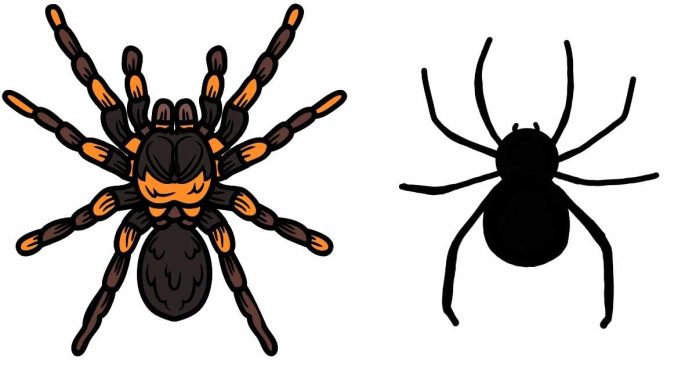A spider with white stripes on its back could potentially be one of several species, as some spiders feature distinctive markings that can include white or pale stripes. Below are a few examples of spiders that are known for having white or light-colored stripes on their backs:
1. Zebra Jumping Spider (Salticus scenicus)
- Appearance: This small jumping spider (around 8-10 mm) has a distinct black and white pattern on its body. Its back features alternating white and black stripes that resemble a zebra pattern, which is where the name comes from.
- Habitat: Common in gardens, on walls, and in other places around human habitation.
- Behavior: Known for its active and curious nature, it is a jumping spider, meaning it uses its excellent vision to stalk and jump onto its prey.
2. Banded Garden Spider (Argiope trifasciata)
- Appearance: The banded garden spider has a black-and-white striped abdomen, with the stripes running lengthwise. The rest of its body may have some yellowish coloration, and it has a characteristic appearance with a pattern that looks like a set of bands or stripes.
- Habitat: Typically found in gardens, fields, or places with dense vegetation, often building large, intricate webs.
- Behavior: Non-aggressive to humans and often found in the center of its web.
3. White-banded Huntsman Spider (Heteropoda venatoria)
- Appearance: This large huntsman spider has a pale-colored, sometimes white or cream-colored abdomen with distinctive dark or black stripes running down its back.
- Habitat: Usually found in tropical and subtropical areas, often in and around human structures.
- Behavior: Hunts and forages on the ground or in crevices rather than building a web.
4. Lynx Spider (Oxyopes spp.)
- Appearance: Some species of lynx spiders have pale markings or white stripes on their backs, though this is not universally the case. These markings can help the spider blend into its environment.
- Habitat: Found in grassy or shrubby areas, they are active hunters and do not spin webs to catch prey.
- Behavior: They are fast-moving and aggressive predators, often attacking insects larger than themselves.
5. Marbled Orb-Weaver (Araneidae family)
- Appearance: Some orb-weaver spiders, particularly those from the genus Araneus, can have pale or white streaks or marbled patterns on their backs. These spiders typically have a wide range of colors, but some species show striking white patterns.
- Habitat: Often found in gardens and forests where they build large, circular webs.
- Behavior: These spiders are not aggressive and rely on their webs to trap flying insects.
6. Wasp Spider (Argiope aurantia)
- Appearance: This species, found in Europe and parts of Asia, has a distinctive black-and-white striped pattern on its abdomen, often with yellow accents. The white stripes are usually part of a more intricate color pattern.
- Habitat: Found in grassy areas, gardens, and fields, often building large webs.
- Behavior: Like other orb-weavers, it waits in the center of its web for prey.
Key Identification Tips:
- Jumping Spiders (Salticidae family) typically have very good vision and distinctive body shapes and patterns. They can have bright white stripes or markings.
- Orb-Weavers (Araneidae family) often have striking patterns on their abdomen, which may include white or pale stripes.
- Huntsman Spiders (Sparassidae family) are typically large and fast-moving, with some species showing light-colored stripes or markings on their backs.


